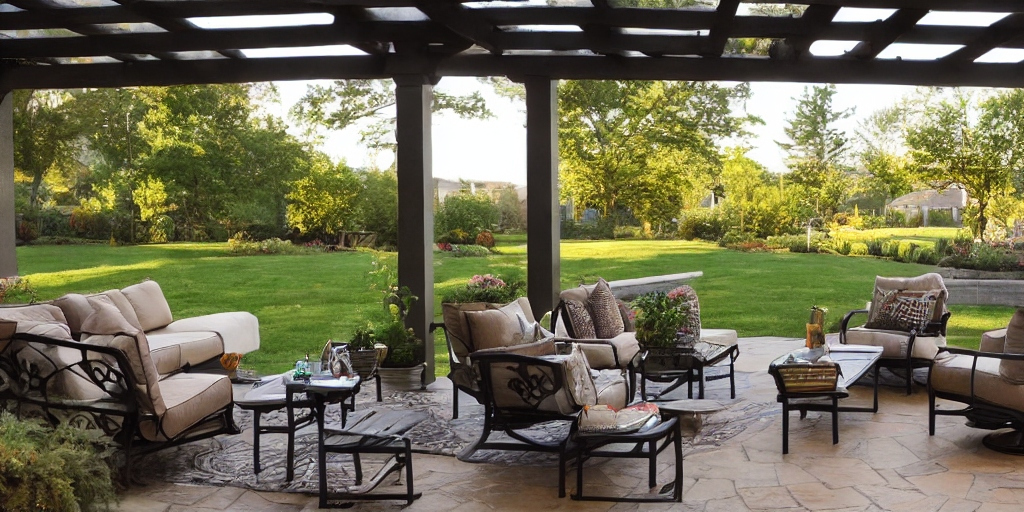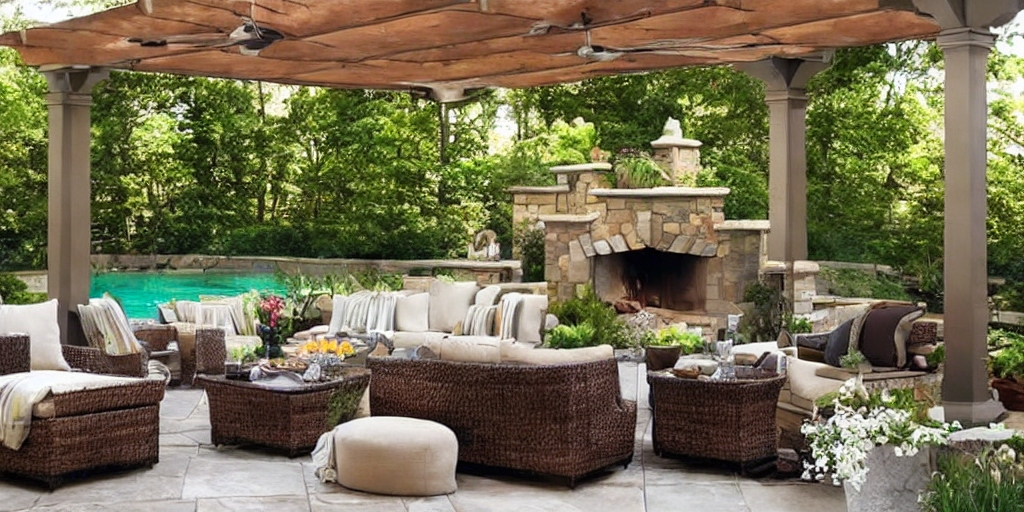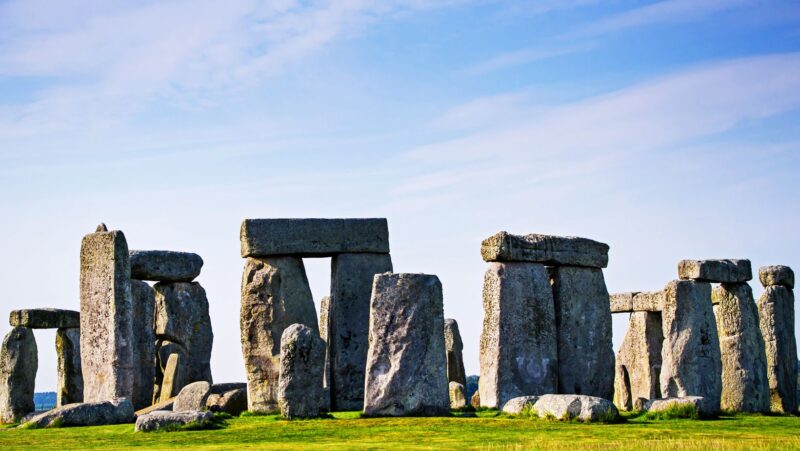Transforming the backyard into an outdoor oasis isn’t just a fad—it’s a lifestyle choice that’s sweeping the nation. From cozy patios to fully equipped outdoor kitchens, the concept of outdoor living spaces has evolved far beyond a simple deck with a grill.
These spaces offer an extension of your home, providing a spot to unwind, entertain, and enjoy the great outdoors. But what makes an outdoor living space truly exceptional? And how can you create one that fits your lifestyle and aesthetic preferences? We’re diving into the world of outdoor living spaces to bring you the answers.
Exploring the Concept of Outdoor Living Spaces
Outdoor living spaces represent an innovative design approach, melding the charm of natural environments with the comfort of indoor amenities. This fusion, when executed correctly, results in scenic outdoor areas that amplify one’s living space. Key aspects distinguishing these spaces include crafting a balance between usability and aesthetics, integration with the natural environment, and commitment to generating a welcoming atmosphere.
Firstly, the balance between usability and aesthetics forms a cornerstone in all outdoor living spaces. These spaces combine practical elements, such as durable outdoor furniture (like weather-resistant seating and tables), with visually appealing aspects, exemplified in elements like decorative lighting and unique landscaping. Creating a harmonious blend of both elements ensures an aesthetically pleasing, functional space.
Secondly, integration with the natural environment plays a crucial role in defining an outdoor living space. Be it rustic outdoor fireplaces or vegetable gardens, each component aims to enhance, not subdue, the natural surroundings. Thoughtfully chosen elements help assume a seamless transition from the indoor space to the vibrancy of the outdoor scenery.
Lastly, outdoor living spaces embody a welcoming atmosphere. They retain a vibe that prompts relaxation, be it through soothing water features or snug fire pits. Provisions for entertainment, such as built-in BBQ grills or sound systems, equip these spaces for hosting, resulting in a hub of social interaction amidst a backdrop of nature’s beauty.
Understanding the concept of outdoor living spaces necessitates an appreciation for the art of blending function with design, nurturing a connection with the natural world, and cultivating an ambiance of comfort and sociability. These spaces then cease to be mere extensions of the home; Instead, they grow into unique, captivating retreats, fostering an embodiment of outdoor living unlike any other.

Essential Elements of Outdoor Living Spaces
Embarking on the journey to create an exceptional outdoor living space requires more than a grill and a picnic table. It calls for nuanced planning centered around certain essential elements. These components not only ensure the space’s usability but also contribute to its elegance and charm.
1. Comfortable, Weather-Resistant Furniture: Outdoor living spaces demand seating arrangements that combine durability and comfort. Top-notch furniture options include fade and stain-resistant fabrics, synthetic resin, and all-weather wicker. For instance, a set of resin Adirondack chairs often provides elegant comfort while withstanding environmental elements.
2. Strategic Lighting: Outdoor spaces thrive under cohesive lighting plans. High-quality ambient lighting establishes a warm, inviting feel, while task and accent lighting ensure usability even after sundown. Solar pathway lights, string lights, or even a statement outdoor chandelier could enhance this space’s aesthetic appeal.
3. Engaging Landscapes: Landscaping plays a pivotal role, in terms of aesthetics and functionality. Arrays of blooming flower beds, sturdy trees offering shade, shrubs for privacy, or a swaying bed of ornamental grasses, all enrich the area’s aesthetic appeal.
4. Outdoor Kitchen: An outdoor kitchen amplifies the space’s social aspect. It transforms a basic patio or deck into an engaging hub for entertaining guests, hosting memorable barbecues, or enjoying quiet family dinners. Popular features incorporate built-in grills, outdoor refrigerators, and even pizza ovens.
5. Fire Feature: Fire pits or outdoor fireplaces often serve as the focal point of an outdoor living space. They deliver a healthy dose of warmth and light while promoting a social gathering.
6. Shade Structures: Structures like pergolas, gazebos, or umbrellas combat sun exposure, thus extending the outdoor space’s usability across diverse weather conditions.
7. Outdoor Audio/Video System: For enhanced entertainment, an outdoor audio/video system makes a valuable addition. Immersive outdoor speakers or a weather-resistant television can turn an ordinary backyard into an outdoor movie theater.
In pursuit of creating an idyllic outdoor retreat, these essential elements, hence, prove invaluable. Keeping them at the forefront of planning indirectly promotes balanced usability and aesthetic appeal, connects the area with nature, and fosters a welcoming environment for relaxation and entertainment alike.
Benefits of Outdoor Living Spaces
Outdoor living spaces serve various advantages, providing ideal areas for both relaxation and active lifestyles. To establish an understanding of their benefits, this section unveils each advantage in detail.
Firstly, they offer enhanced home value. Homebuyers perceive outdoor living spaces as an appealing feature, often leading to increased property value. For instance, a study from the American Society of Landscape Architects exemplifies that outdoor design elements significantly impact property appeal.
Secondly, outdoor living spaces foster healthier lifestyles. Experiencing the outdoors leads to regular exposure to nature, promoting reduced stress levels and improved mental health. The Department of Environmental Conservation even reports lower blood pressure, better focus, and boosted immunity as effects of spending time in nature.
Additionally, these spaces serve as perfect locales for social interaction. Setting up a comfortable seating arrangement with a fire pit or an outdoor kitchen can create the ultimate entertainment spot. Guests can gather, share conversations, indulge in food and beverages, creating memories under the open sky.
Next, practical purpose-driven activities get a fresh perspective in outdoor living spaces. Be it morning yoga sessions or pleasant evening reads, the openness and tranquility of these areas enhance the experience. Examples include a strategically placed rocking chair under the shade for reading or an open area equipped with a yoga mat for meditative practices.
Finally, outdoor spaces offer unique opportunities for customization and creativity. Owners can manifest their aesthetics, from installing water features to setting up a vertical garden, thereby creating a personal oasis in their backyard.
To sum up, the benefits of outdoor living spaces include increased home value, improved health, enhanced social interaction, activity-specific areas, and customization opportunities. Regardless of the size or location, every backyard holds the potential to become a sought-after outdoor retreat, reaping these myriad benefits.
How to Design Your Outdoor Living Space
Designing an outdoor living space involves careful planning, considering the intended use, and integrating the elements harmoniously.
Start by defining the purpose. It’s paramount to determine how one plans to use this outdoor area. It could serve as an entertainment hub, a tranquil oasis, or a workspace. The chosen usage pattern influences the layout and items chosen for integration. For instance, an entertainment-centered design might incorporate an outdoor bar or a grilling station, while a work-focused layout includes comfortable seating and adequate shade.
Identify the key elements next. Using the combination approach of furniture, lighting, and landscapes, homeowners often achieve a splendid balance between usability and aesthetics. Outdoor kitchen setups, fire features, shade structures, and audio/video systems also factor into this equation. For instance, fire pits create warm, inviting ambiance on cooler nights, while a well-organized outdoor kitchen makes hosting effortless.
Incorporate appropriate lighting solutions during this phase as they play a fundamental role in setting the ambiance and enhancing safety. For example, path lights illuminate walkways, while accent lights emphasize architectural or plant features.
Choose the right outdoor furniture that suits the purpose of the space, the environment, and the aesthetic preferences. Outdoor furniture comes in various materials, styles, and sizes. For alfresco dining or entertaining, consider a large dining table and chairs. For relaxation, opt for comfy lounges or hammocks.
Lastly, embrace the natural surroundings. Your yard’s landscape, whether it’s a lush green lawn or a picturesque garden, plays a crucial role in the design. Integrating plant elements, such as trees for shade and floral plants for color, enhances the area’s appeal, making it a well-blended extension of the indoors.
Remember, designing an outdoor living space calls for careful thought, but it also means expressing personal style, boosting home value, and reaping diverse benefits. With strategic planning, every backyard has the potential to transform into an appealing and functional outdoor sanctuary.
Mistakes to Avoid When Creating Outdoor Living Spaces
Transforming backyards into captivating outdoor living spaces involves numerous considerations. Despite vast potential, homeowners often make certain mistakes, compromising their outdoor spaces’ functionality and appeal.
Ignoring the Outdoor’s Purpose: Homeowners often leap into designing without defining the space’s purpose. Spaces designed for extended family dinners differ from those designed for tranquil solo retreats. By first identifying the space’s purpose, homeowners ensure its design meets the intended functionality.
Disregarding climate and seasonality: Despite the allure of magazine-inspired outdoor spaces is high, they might not suit every climate. Homeowners risk making unpractical decisions by not considering local weather patterns and choosing inappropriate furniture, plants, and structures.
Overlooking maintenance needs: Maintenance is essential for preserving the beauty of outdoor spaces. Choosing low maintenance furniture and plants prevent future hassles and ensure longevity.
Inadequate lighting: Homeowners often undervalue the significance of lighting in outdoor spaces. Proper lighting enhances ambiance, safety, and usability during evenings.
Overcrowding the space: Outdoor spaces thrive on balance. Filling them with too many elements congests the area, making it less inviting and visually overwhelming.
Ignoring privacy: Overlooking privacy could lead to discomfort. Incorporating privacy features like fences and screens provide a sense of seclusion, making the space more enjoyable.
Forgoing professional help: Even with various DIY resources, professional help provides invaluable support. Landscape designers offer expert advice, reducing the risk of costly errors and ensuring an appealing, functional design that also adds value to the property.
Mismatching styles: Consistency maintains a sense of harmony. A stark contrast between the exterior and interior styles can create an incoherent, disjointed feeling.
Avoidance of these common mistakes heightens the chance of crafting an outdoor living space that’s not just aesthetically pleasing, but also functional and harmonious with the surrounding environment.

Spotlight on Different Outdoor Living Spaces around the World
Diverse societies around the world have uniquely embraced outdoor living spaces, steeped in their traditions, geography, and climate considerations. It’s enlightening to explore how various cultures have developed and personalized these areas.
First, let’s journey to the Mediterranean. Greek homes, rich in history, prominently feature inner courtyards. Often filled with greenery, such as lemon trees and climbing roses, these courtyards have creation purpose and serve as serene outdoor retreats. Enclosed walls provide privacy, and decorative tile work adds vibrant color to these spaces.
Next, let’s traverse to Scandinavia. Famous for minimalist and functional design, Scandinavian outdoor spaces incorporate natural, rustic elements. Sleek fire pits, modern furniture, and cozy blankets are common, as these areas are designed for year-round use. They serve as tranquil havens against the region’s harsh winters.
Let’s journey to the tropics. Balinese outdoor spaces integrate with the surrounding lush environment. Typical features include gazebos known as ‘Bale,’ covered seating areas, and water features like ponds and fountains, further enhancing the tropical ambiance. Orchids and palm trees accentuate these spaces, connecting them with the natural scenic beauty found in Bali.
Let’s move to North America now. American outdoor spaces optimize for comfort and entertainment. Patios and decks are furnished for social gatherings, with grills, dining tables, seating sections, even outdoor kitchens. Swimming pools are a popular addition, especially in warmer climates, underlining the love for fun and relaxation.
It should also mention Japan’s exceptional outdoor spaces. Embodying an integral aspect of their traditional architecture, Japanese gardens symbolize harmony and tranquility. Elements like ponds, stone lanterns, bridges, and meticulously trimmed plants highlight nature’s beauty while reflecting a philosophy of balance and serenity.
These distinct examples shed light on how outdoor living spaces, irrespective of location, foster a profound human-nature connection. They reflect not only geographic, climatic, and architectural aspects, but also the essence, culture, and lifestyle of their locales.
Outdoor living spaces aren’t just a fad. They’re a testament to the human desire to connect with nature while enjoying the comforts of home. Whether it’s the lush greenery of a Balinese backyard or the minimalist elegance of a Scandinavian space, these areas reflect our diverse cultures and lifestyles. They’re more than just extensions of our homes – they’re spaces where we can relax, entertain, and foster a deeper appreciation for our surroundings. So if you’re looking to enhance your home’s value or simply want to promote a healthier lifestyle, consider investing in your own outdoor living space. After all, it’s not just about creating an area for leisure – it’s about crafting an environment that resonates with your personal style and the natural world.





